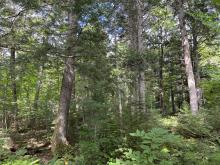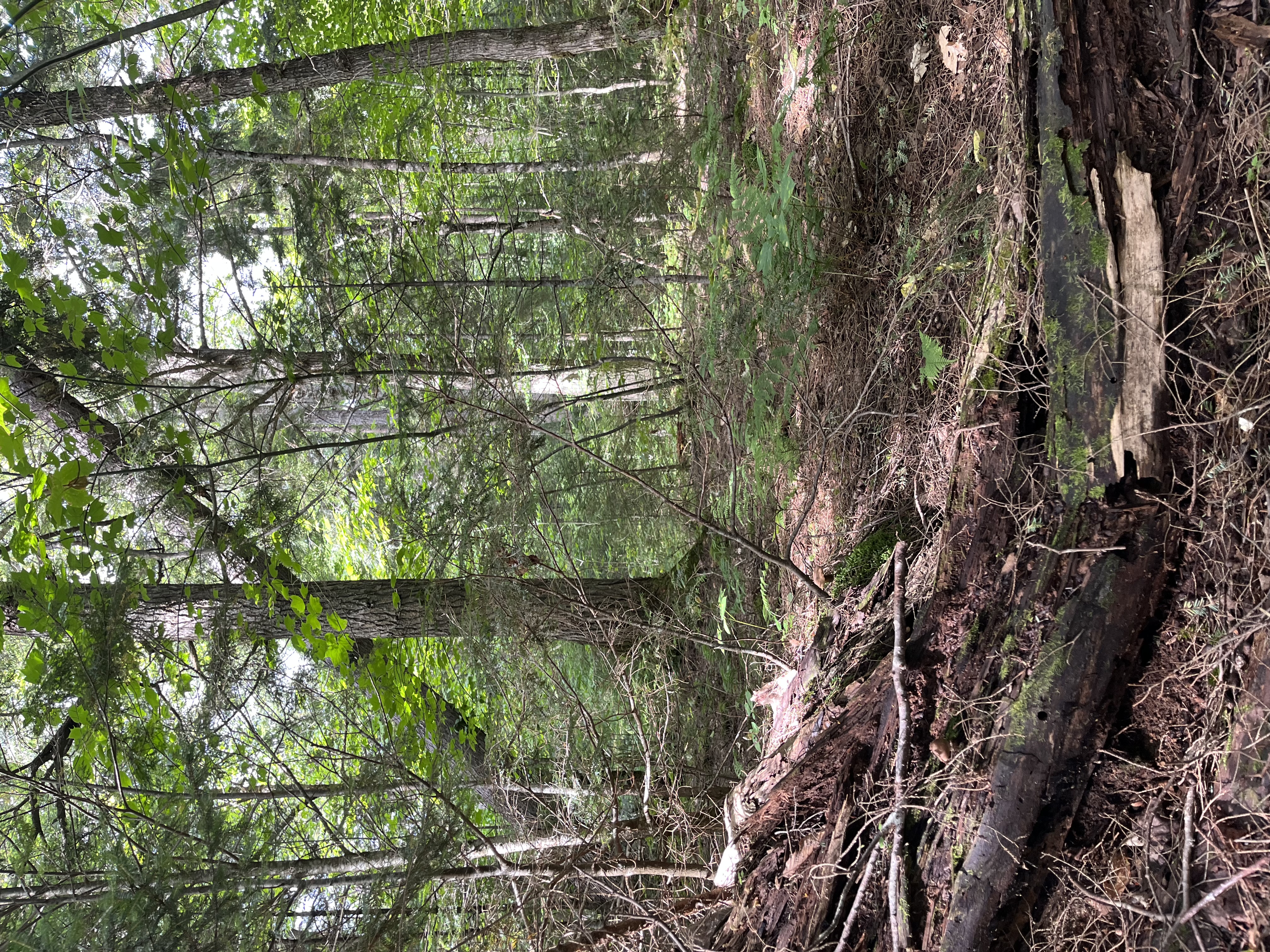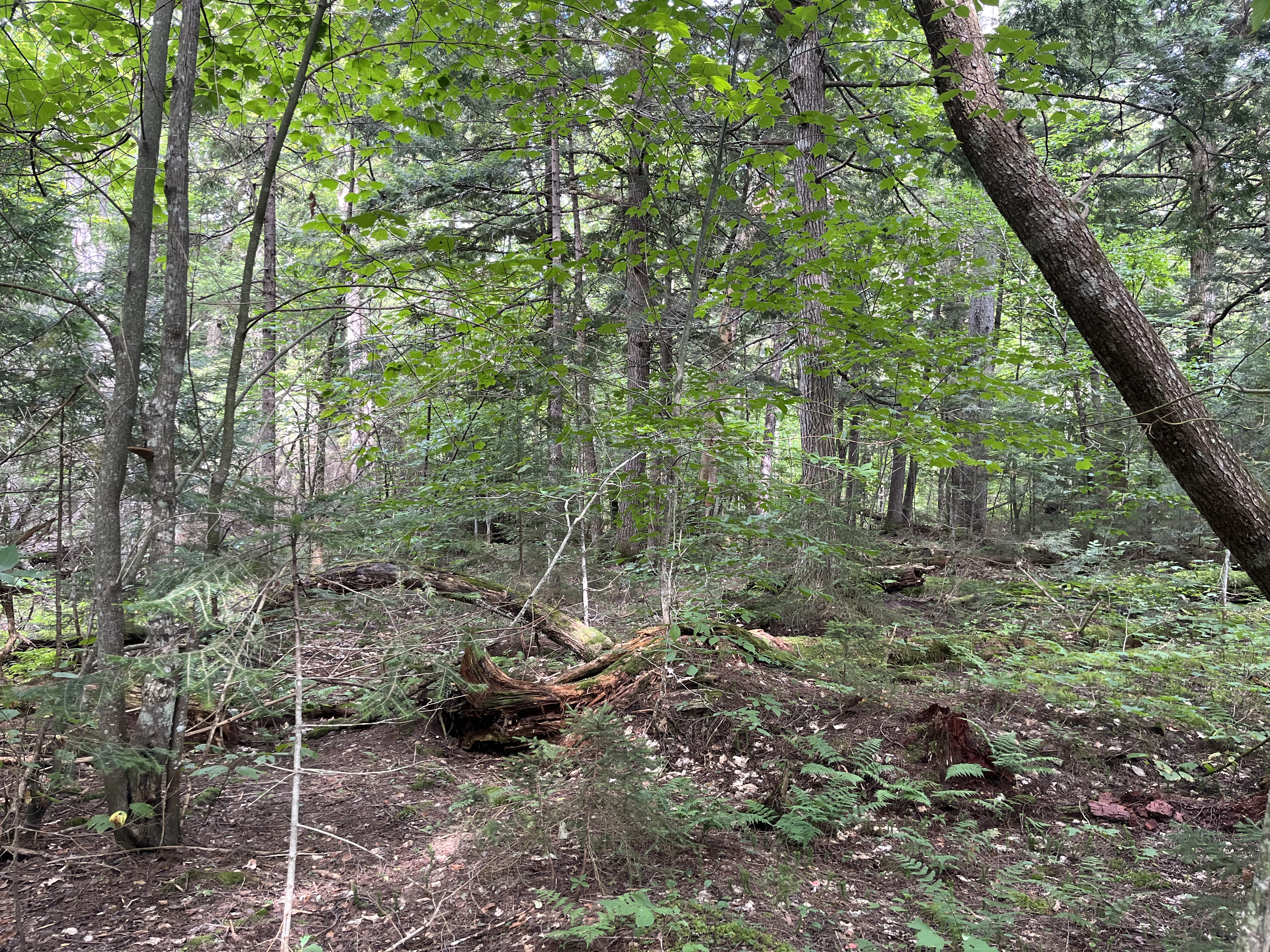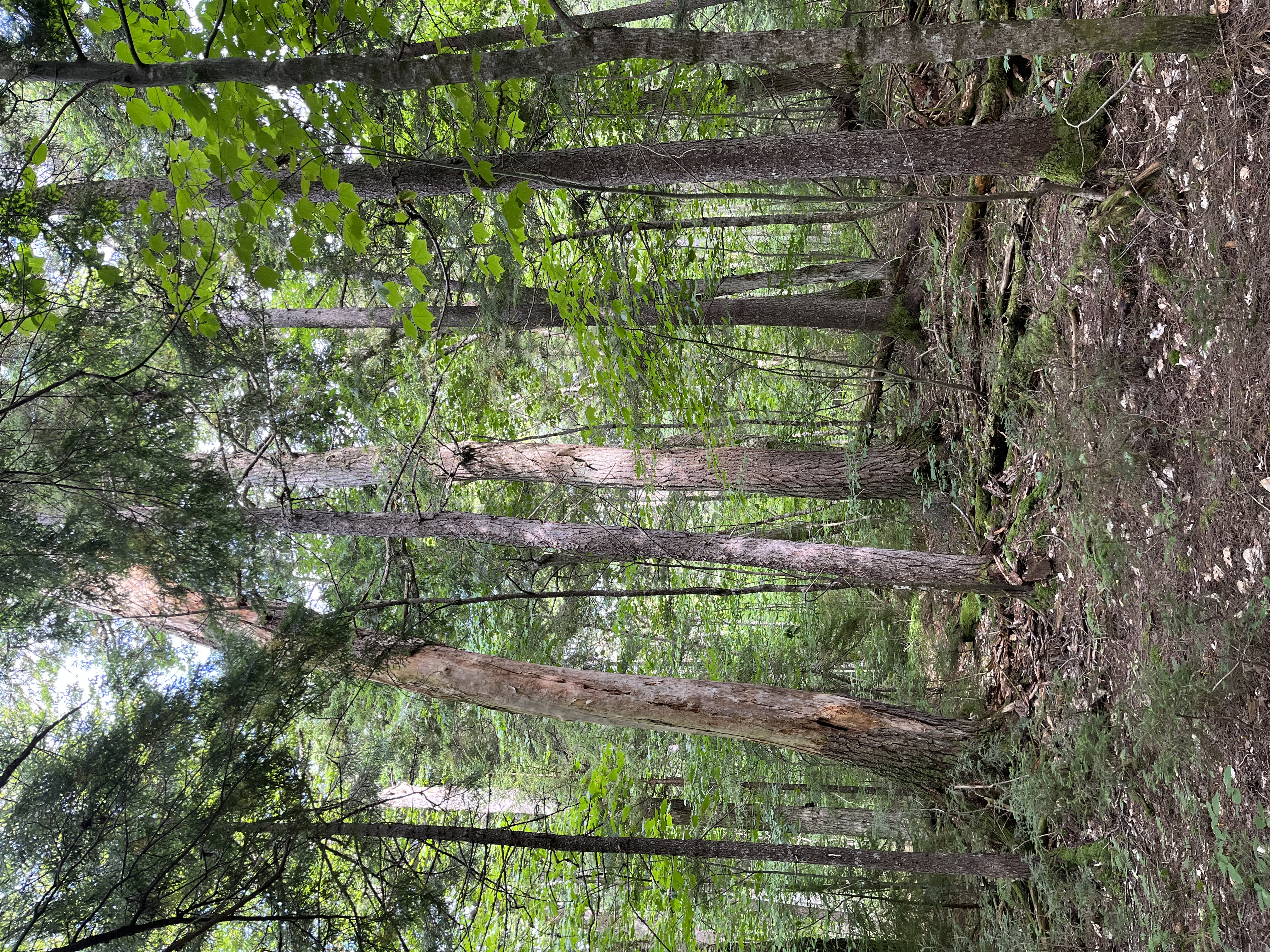Submission information
Frost Pond Forest

Frost Pond Forest (FPF) is an approximately 150-acre stand within Baxter State Park's Scientific Forest Management Area (SFMA). The goals of this project are to maintain old-growth structural components and characteristics, promote the production of high-value speciality timber products such as tonewood, and monitor the forest's response over time.
Site Location
Northeast Piscataquis, Maine
Frost Pond Forest is just north of Frost Pond in T6R9.
45.90502910320916
-69.19342830642822
Frost Pond Forest is accessible by foot via Frost Pond Road.
Baxter State Park
+1 207-731-7969
Stand Information
150 acres
Spruce/hemlock
Late-successional
bark beetles
bark beetles
Telos-Monarda-Monson association
Pre-treatment Conditions
Historical harvesting activity, likely dating back to the turn of the century, is evident in the form of several large, old white pine stumps. The red spruce present on the stand is estimated to be between 180 and 240 years old, with the hemlock approaching 300 years old. In the early 2000s, it was determined that the forest contained many old-growth characteristics that should be maintained. Presently, there is limited evidence of recent harvests of red spruce or hemlock resulting from a 2003 harvest.
Picea rubens (red spruce)
Tsuga canadensis (eastern hemlock)
Silviculture Prescription
Frost Pond Forest (FPF) is an approximately 150-acre management unit within the Scientific Forest Management Area (SFMA) of Baxter State Park. Upon the initial stand evaluation, it was determined that this stand contains many old-growth characteristics that should be maintained. To gain deeper insights into the stand, fifteen 1/10th acre continuous forest inventory (CFI) plots were established. Beyond basic tree and stand attributes, line transects for dead and downed woody debris are recorded. In addition to the CFI plots, a survey of lichens and avian species was undertaken along with establishing covered object arrays (COA) used to monitor upland salamanders. During the initial inventory process, a concerning rise in standing dead spruce trees, afflicted by the spruce bark beetle, came to attention. In response, the decision was made to harvest a portion of the affected trees in 2003. The harvest of approximately 130 cords of bark beetle-infested spruce effectively averted any potential outbreak, safeguarding the health of FPF. The harvest was deemed a success, preserving the stand's structure and composition while effectively managing the bark beetle infestation. The harvested large old spruce was sold as tonewood and the CFI plot measurements and the 2017 follow-up survey indicate minimal bark beetle presence. Future irregular shelterwood harvests will be performed with the goals of maintaining forest health, old-growth structure, and species diversity.
The silvicultural objectives are to maintain late-successional status and measure them over time and quantify the efforts to maintain those characteristics. During initial management considerations, particular attention was given to the abundant presence of large dead woody debris, both standing and downed, further emphasized the stand's late successional status. The overarching objective was to safeguard these distinctive characteristics over time, while ensuring that harvest operations emulated natural disturbances, thereby preserving the forest's long-term cycles and development.
The primary objectives for the Frost Pond management unit are to identify and conserve the stand's late-successional features and components while exploring opportunities for specialized "niche" products, such as tonewood while actively managing FPF and monitoring the results over time.
The 2003 harvest was a sanitation harvest intended to remove dead and dying trees that are susceptible to spruce bark beetle and to prevent the infestation of nearby trees.
The primary goal was to capture immanent mortality while retaining the most vigorous, healthy trees. A secondary goal was to initiate regeneration.
irregular shelterwood
- forest health
- species or ecosystem restoration
- climate change
- landscape context
- Sawlog production
Current models indicate that Maine will experience increasingly warmer temperatures and more frequent droughts in the summer and fall. Warm temperatures not only accelerate spruce bark beetle development but also increase the probability of an outbreak due to stressed forests. While most infestations end when the insects are forced out from the inner bark by pitch, the combination of insects feeding on the phloem and the tree expelling its pitch contributes to tree mortality. This combination of factors could threaten red spruce forests in Maine. Therefore, in addition to capturing mortality and maintaining the old forest characteristics, we aim to increase the overall vigor of the stand. By doing this, the forest should be able to respond to future climate challenges. Also, by maintaining the spruce stocking below the spruce bark beetles preferred habitat threshold of 65% spruce with an average diameter at breast hight greater than 16 inches and 150 square feet of basal area per acre, future outbreaks are less likely.
The harvest was performed by a single chainsaw operator with a cable skidder.
The initial plan was as follows: • Establish a narrow, permanent, numbered network of forwarder trails (12' width), spaced at 400-500' providing access at the 2.5% density level. • Use a 2-year operating cycle with a corresponding low harvest level (150 ac. X .25 = 37.5 x 2 years = 75 cords per harvest) • Harvest would be targeted toward recent or very imminent mortality only. The entire area would be covered - marked trees mapped with GPS • To improve operational productivity, the harvester was provided with mapped tree location for harvest (including GPS) - navigation by numbered forwarder roads. Harvest would require pre-bunching to forwarder roads with small skidders. • Approximately 5% of the target harvest is retained in stand for structural needs •Harvest sites revisted at 10 years for stand composition treatments (spacing) • Begin pruning program on red spruce < 8" dbh • Strive to develop long-term niche markets for large, high-quality spruce logs The primary silvicultural goal was to improve forest health via the removal of all live trees affected by the beetle. By the end of the harvest, 130 cords were deemed infested by spruce beetles and removed in 2003. Several changes to the initial plan were made, including: • The 75-cord target was exceeded • The harvest was performed by a hand crew instead of a cut-to-length crew • The 2-year return interval was abandoned • No pruning was performed
Post-treatment
yes
Due to the infestation of bark beetles on the red spruce within FPF, a 2-year interval was prescribed. There are no plans for tree pruning or spacing, but significant legacies still will be retained and allowed to complete their life cycles. CFI plots have been implemented to continuously monitor the land.
Miscellaneous
Continuous Cover Irregular Shelterwood
Frost Pond Forest also has a NIACS adaptation demo linked here: https://forestadaptation.org/adapt/demonstration-projects/baxter-sp. The adaptation demo is more forward-looking with monitoring, future management, and future forest health concerns in mind. The demo has information all the way up to 2023.
Statistics
Contact Information
Shane Miller
Lands Manager
Baxter State Park
Millinocket, Maine. 04462
Supplementary Content


